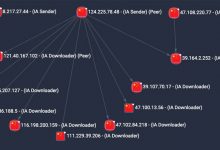The Ashley Madison Hack: A Wake-Up Call for Cybersecurity
-
- Encryption and Data Protection: One of the primary failures in the Ashley Madison breach was the lack of adequate encryption for sensitive user data. Ensuring that all personal and financial information is encrypted can significantly mitigate the risk of data breaches.
-
- Vulnerability Management: Regular security assessments and vulnerability management are essential. The hack exploited specific vulnerabilities in Ashley Madison’s infrastructure, highlighting the importance of continuous monitoring and updating of security measures .
-
- Incident Response Planning: The breach demonstrated the importance of having a robust incident response plan. Rapid detection and response can limit the damage caused by a data breach and help in managing the aftermath more effectively.
-
- User Authentication: Implementing stronger user authentication methods, such as two-factor authentication (2FA), can provide an additional layer of security against unauthorized access.
-
- Transparency and User Trust: Building and maintaining user trust requires transparency about how user data is protected. Clear communication about security practices and prompt notifications in case of breaches are crucial.
Moving Forward
In the wake of the Ashley Madison hack, many companies have taken steps to bolster their cybersecurity defences. However, the evolving landscape of cyber threats demands continuous improvement and vigilance. Businesses must adopt a proactive approach, investing in advanced security technologies, and fostering a culture of cybersecurity awareness among employees.
The Ashley Madison hack is a sobering example of the catastrophic effects of cybersecurity failures. For cybersecurity professionals, it is a reminder of the ongoing battle against cyber threats and the critical need for comprehensive security strategies. By learning from past breaches and continuously evolving our security practices, we can better protect our systems, our data, and ultimately, our users.
Sources:
-
- Privacy Rights Clearinghouse. “Ashley Madison Data Breach.” Retrieved from Privacy Rights.
-
- The Guardian. “Ashley Madison hack: police launch investigations into extortion attempts.” Retrieved from The Guardian.
-
- Wired. “Inside the Ashley Madison Hack.” Retrieved from Wired.
WWDVFD
If Da Vinci Cybersecurity had been offering services to Ashley Madison to secure their platform, we would have recommended a comprehensive, multi-layered approach to security, encompassing several key areas. Here are the main strategies we would have implemented:
1. Data Encryption
Recommendation: Implement strong encryption for all sensitive data, both at rest and in transit.
Implementation: Use advanced encryption standards (AES-256) for data storage and SSL/TLS for data in transit. Ensure end-to-end encryption for all user communications.
2. Access Control and Authentication
Recommendation: Enforce strict access controls and multi-factor authentication (MFA).
Implementation: Limit access to sensitive data based on the principle of least privilege (PoLP). Implement MFA for all user accounts and administrative access.
3. Regular Security Audits and Penetration Testing
Recommendation: Conduct regular security audits and penetration tests to identify and address vulnerabilities.
Implementation: Partner with third-party cybersecurity firms to perform regular audits. Use automated tools and manual testing to uncover vulnerabilities.
4. Incident Response Plan
Recommendation: Develop and maintain a robust incident response plan.
Implementation: Create a detailed incident response plan outlining steps for detecting, responding to, and recovering from data breaches. Conduct regular drills to ensure preparedness.
5. Vulnerability Management
Recommendation: Implement a comprehensive vulnerability management program.
Implementation: Regularly update and patch all software and systems. Use vulnerability scanning tools to identify and remediate potential threats.
6. Secure Software Development Lifecycle (SDLC)
Recommendation: Integrate security into the software development lifecycle.
Implementation: Adopt secure coding practices and conduct code reviews. Use static and dynamic analysis tools to detect security flaws during development.
7. Data Anonymization
Recommendation: Anonymise user data to protect privacy.
Implementation: Use techniques such as tokenisation and data masking to anonymize personally identifiable information (PII).
8. Employee Training and Awareness
Recommendation: Provide regular cybersecurity training and awareness programs for employees.
Implementation: Conduct training sessions on phishing, social engineering, and secure handling of sensitive data. Foster a culture of security awareness within the organisation.
9. Monitoring and Detection
Recommendation: Implement advanced monitoring and intrusion detection systems.
Implementation: Use SIEM (Security Information and Event Management) systems to monitor network traffic and detect unusual activities. Implement intrusion detection/prevention systems (IDS/IPS).
10. Data Backup and Recovery
Recommendation: Maintain secure and regular data backups.
Implementation: Implement automated backup solutions with encryption. Ensure backups are stored securely and test recovery processes regularly.
11. Privacy and Compliance
Recommendation: Ensure compliance with relevant data protection regulations.
Implementation: Stay updated with regulations such as GDPR and CCPA. Implement necessary controls and policies to ensure compliance.
12. Third-Party Risk Management
Recommendation: Assess and manage risks associated with third-party vendors.
Implementation: Conduct thorough security assessments of third-party vendors. Ensure they adhere to the same security standards as your organisation.
By implementing these strategies, Ashley Madison could have significantly enhanced its cybersecurity posture, protecting user data and maintaining trust.
The goal is to create a resilient security framework that can withstand evolving cyber threats and safeguard sensitive information.
Speak to us
The Ashley Madison hack, one of the most notorious data breaches in recent history, serves as a stark reminder of the critical importance of robust cybersecurity measures. In July 2015, a group of hackers known as “The Impact Team” infiltrated the systems of Ashley Madison, a dating website catering to individuals seeking extramarital affairs. This breach not only exposed the personal information of millions of users but also underscored significant vulnerabilities in data security practices.
The Breach
The breach involved the exfiltration of over 30 million user accounts, including names, email addresses, home addresses, search histories, and credit card transaction records . The hackers demanded the shutdown of Ashley Madison and its partner site, Established Men, threatening to release user data if their demands were not met. When the company failed to comply, the hackers followed through on their threat, publishing the stolen data on the dark web.
Impact on Users and Businesses
The fallout from the breach was immediate and severe. Many users faced public embarrassment, extortion attempts, and personal crises due to their exposed affiliations with the site. In some tragic cases, the breach reportedly led to suicides .
For businesses, the hack highlighted the dire consequences of inadequate cybersecurity. Ashley Madison’s parent company, Avid Life Media, faced multiple lawsuits, significant financial losses, and an irreversible hit to its reputation. The breach underscored the necessity for all organisations to prioritise data protection and user privacy.
Lessons Learned from the Ashley Madison hack
The Ashley Madison hack offers several critical lessons for cybersecurity professionals:
-
- Encryption and Data Protection: One of the primary failures in the Ashley Madison breach was the lack of adequate encryption for sensitive user data. Ensuring that all personal and financial information is encrypted can significantly mitigate the risk of data breaches.
-
- Vulnerability Management: Regular security assessments and vulnerability management are essential. The hack exploited specific vulnerabilities in Ashley Madison’s infrastructure, highlighting the importance of continuous monitoring and updating of security measures .
-
- Incident Response Planning: The breach demonstrated the importance of having a robust incident response plan. Rapid detection and response can limit the damage caused by a data breach and help in managing the aftermath more effectively.
-
- User Authentication: Implementing stronger user authentication methods, such as two-factor authentication (2FA), can provide an additional layer of security against unauthorized access.
-
- Transparency and User Trust: Building and maintaining user trust requires transparency about how user data is protected. Clear communication about security practices and prompt notifications in case of breaches are crucial.
Moving Forward
In the wake of the Ashley Madison hack, many companies have taken steps to bolster their cybersecurity defences. However, the evolving landscape of cyber threats demands continuous improvement and vigilance. Businesses must adopt a proactive approach, investing in advanced security technologies, and fostering a culture of cybersecurity awareness among employees.
The Ashley Madison hack is a sobering example of the catastrophic effects of cybersecurity failures. For cybersecurity professionals, it is a reminder of the ongoing battle against cyber threats and the critical need for comprehensive security strategies. By learning from past breaches and continuously evolving our security practices, we can better protect our systems, our data, and ultimately, our users.
Sources:
-
- Privacy Rights Clearinghouse. “Ashley Madison Data Breach.” Retrieved from Privacy Rights.
-
- The Guardian. “Ashley Madison hack: police launch investigations into extortion attempts.” Retrieved from The Guardian.
-
- Wired. “Inside the Ashley Madison Hack.” Retrieved from Wired.
WWDVFD
If Da Vinci Cybersecurity had been offering services to Ashley Madison to secure their platform, we would have recommended a comprehensive, multi-layered approach to security, encompassing several key areas. Here are the main strategies we would have implemented:
1. Data Encryption
Recommendation: Implement strong encryption for all sensitive data, both at rest and in transit.
Implementation: Use advanced encryption standards (AES-256) for data storage and SSL/TLS for data in transit. Ensure end-to-end encryption for all user communications.
2. Access Control and Authentication
Recommendation: Enforce strict access controls and multi-factor authentication (MFA).
Implementation: Limit access to sensitive data based on the principle of least privilege (PoLP). Implement MFA for all user accounts and administrative access.
3. Regular Security Audits and Penetration Testing
Recommendation: Conduct regular security audits and penetration tests to identify and address vulnerabilities.
Implementation: Partner with third-party cybersecurity firms to perform regular audits. Use automated tools and manual testing to uncover vulnerabilities.
4. Incident Response Plan
Recommendation: Develop and maintain a robust incident response plan.
Implementation: Create a detailed incident response plan outlining steps for detecting, responding to, and recovering from data breaches. Conduct regular drills to ensure preparedness.
5. Vulnerability Management
Recommendation: Implement a comprehensive vulnerability management program.
Implementation: Regularly update and patch all software and systems. Use vulnerability scanning tools to identify and remediate potential threats.
6. Secure Software Development Lifecycle (SDLC)
Recommendation: Integrate security into the software development lifecycle.
Implementation: Adopt secure coding practices and conduct code reviews. Use static and dynamic analysis tools to detect security flaws during development.
7. Data Anonymization
Recommendation: Anonymise user data to protect privacy.
Implementation: Use techniques such as tokenisation and data masking to anonymize personally identifiable information (PII).
8. Employee Training and Awareness
Recommendation: Provide regular cybersecurity training and awareness programs for employees.
Implementation: Conduct training sessions on phishing, social engineering, and secure handling of sensitive data. Foster a culture of security awareness within the organisation.
9. Monitoring and Detection
Recommendation: Implement advanced monitoring and intrusion detection systems.
Implementation: Use SIEM (Security Information and Event Management) systems to monitor network traffic and detect unusual activities. Implement intrusion detection/prevention systems (IDS/IPS).
10. Data Backup and Recovery
Recommendation: Maintain secure and regular data backups.
Implementation: Implement automated backup solutions with encryption. Ensure backups are stored securely and test recovery processes regularly.
11. Privacy and Compliance
Recommendation: Ensure compliance with relevant data protection regulations.
Implementation: Stay updated with regulations such as GDPR and CCPA. Implement necessary controls and policies to ensure compliance.
12. Third-Party Risk Management
Recommendation: Assess and manage risks associated with third-party vendors.
Implementation: Conduct thorough security assessments of third-party vendors. Ensure they adhere to the same security standards as your organisation.
By implementing these strategies, Ashley Madison could have significantly enhanced its cybersecurity posture, protecting user data and maintaining trust.
The goal is to create a resilient security framework that can withstand evolving cyber threats and safeguard sensitive information.
Speak to us





